Best Wood for Smoking Meat 2025
- September 22, 2023
- 6 comment
When smoking meat, the type of wood you use is as crucial as the cut of the meat itself. Different woods impart unique flavors, enhancing the taste of your barbecue much like a fine wine complements a meal. From the robust notes of hickory to the sweet undertones of applewood, each type of wood brings something special to the table. Let’s explore some of the best woods for smoking meat in 2025, helping you choose the perfect match to elevate your grilling game. Whether you’re a novice smoker or a seasoned pitmaster, understanding these wood flavors will ensure every smoked dish is a hit.
Best Woods for Smoking Meat List:
The Science Behind the Smoke
It’s not just about the heat; it’s about the aroma. When wood burns, it releases compounds like lignin, cellulose, and various organic elements. These compounds interact with meat and give it that distinct smoky flavor. Different woods produce distinct flavors, making the choice of wood paramount.
1. Hickory: The Jack of All Meats
Hickory wood is a classic choice in American barbecuing, cherished for its strong, smoky flavor that’s as robust as it is versatile across various types of meat. Known for its boldness, hickory imparts a deep, assertive taste that enhances the flavor of many types of meat without the need for additional sugary marinades. This wood’s slightly sweet undertones provide a nice balance to its intense smokiness, which many compare to the savory taste of bacon, particularly when used with pork.
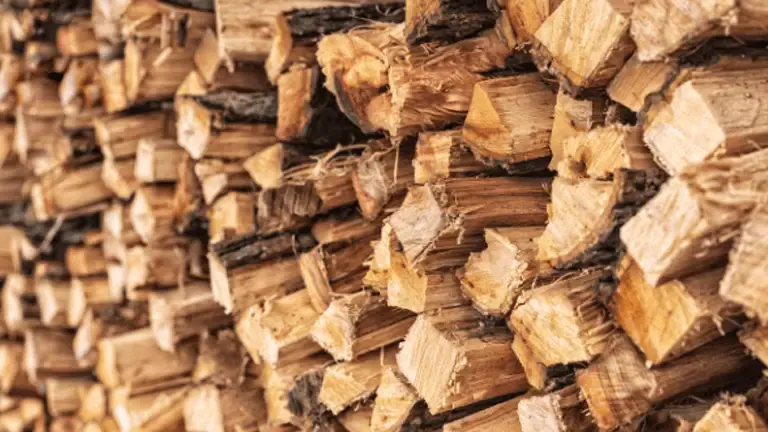
Ideal for meats ranging from pork ribs and chicken to beef brisket and even wild game, hickory complements the natural flavors of these proteins without overwhelming them. However, for those new to smoking with hickory, it might come off as too potent. To mitigate this, it’s often recommended to blend hickory with milder woods like apple or cherry, creating a more rounded flavor profile. This technique allows newcomers to enjoy Hickory’s distinctive taste while softening its impact, making it a perfect introduction to smoking with hardwood.
2. Mesquite: The Bold Southwestern Choice
Mesquite wood, a hallmark of Southwestern cooking, brings a robust, earthy flavor that transforms simple dishes into bold, smoky delights. Originating from the arid regions of the American Southwest and Northern Mexico, mesquite is deeply embedded in the culinary traditions of these areas, making it more than just a cooking material it’s a vital part of regional heritage.
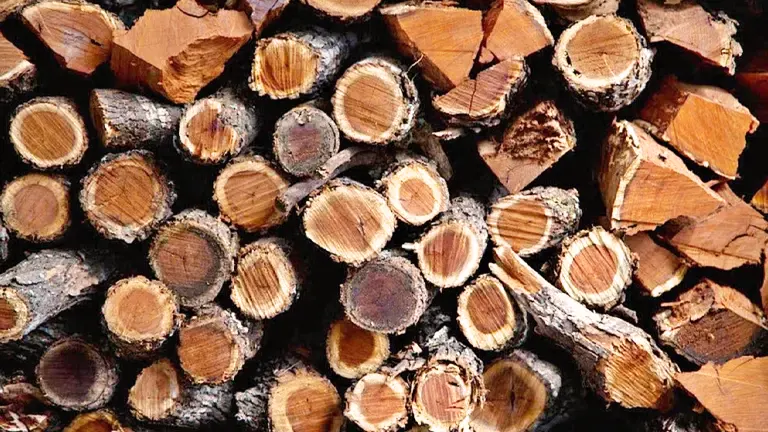
Mesquite’s intense, unapologetic flavor profile makes it perfect for hearty meats like beef. It works exceptionally well with thick steaks, enhancing their natural richness with a deep, smoky char that only mesquite can provide. Brisket, too, benefits from Mesquite’s boldness, gaining layers of flavor during long smoking sessions that make every slice tender and juicy. However, mesquite’s potency means it should be used cautiously—its high heat and fast-burning qualities require careful management to avoid overpowering dishes or burning them. Blending mesquite with milder woods, such as oak or apple, can soften its dominance, allowing for a more balanced taste that enhances rather than overwhelms.
3. Applewood: The Subtle Sweetness
Applewood, sourced from the orchards where crisp apples are grown, offers a gentle, sweet touch to the art of smoking. Its mild and subtly fruity smoke doesn’t overpower but enhances the natural flavors of the meat, making it a favorite for those who appreciate a nuanced smoking experience. The wood’s light sweetness and faint fruitiness are especially perfect for meats that benefit from a bit of caramelization, like pork, or the delicate flavors of poultry and seafood, which are subtly enhanced without being overwhelmed.
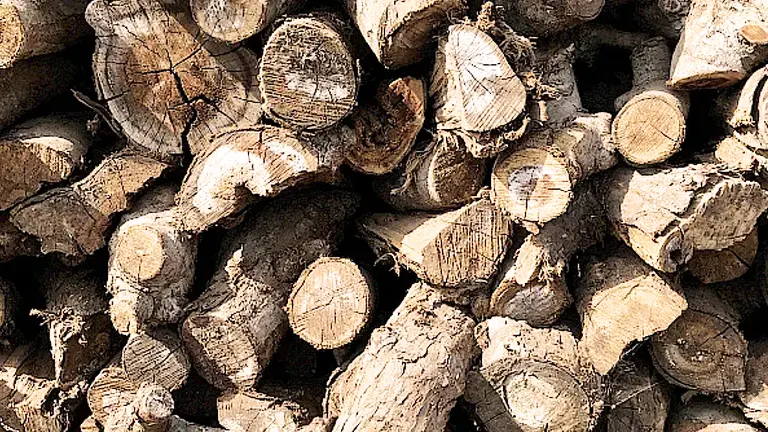
Applewood’s charm lies in its versatility and the soft, sweet smoke it produces, which complements rather than competes with the flavors of the food. For an even more aromatic experience, pairing applewood with herbs like rosemary can add a delightful complexity to the smoke, enhancing the overall flavor profile. Ideal for everything from chicken and turkey to pork and delicate fish, applewood ensures that each dish retains its unique flavors while gaining an additional layer of mild, sweet smokiness. This makes applewood a superb choice for those looking to refine their grilling and smoking techniques with a wood that offers both subtlety and depth.
4. Cherrywood: The Color Enhancer
Cherrywood, celebrated for its beauty and flavor, emerges from the blossoming cherry orchards, adding a touch of artistry to the smoking world. Known for its color-enhancing qualities, cherrywood paints meats with rich mahogany hues and infuses them with a fruity sweetness, transforming every smoked dish into both a visual and culinary masterpiece.

Its mild and subtly sweet profile is perfect for those who prefer their smoked meats to retain a natural flavor with a delicate enhancement. Cherrywood is especially ideal for lighter meats like chicken and turkey, which benefit from its gentle smoke without losing their inherent flavors. For pork, cherrywood adds a dimension of fruitiness that complements the richness of the meat beautifully. For an adventurous twist, try blending cherrywood with a bolder wood like hickory to add depth to its smoke while still enjoying the unique color transformation it brings to the table. This nuanced approach ensures that cherrywood remains a versatile and cherished choice in the palette of smoking woods.
5. Pecan: The Nutty Undertone
Pecan wood, sourced from the grand pecan trees of the southern United States, brings a unique blend of flavors that enhances any smoking session. Its rich, nutty undertones, complemented by a subtle sweetness, make it a sophisticated choice for a variety of smoked dishes. This wood adds a refined complexity to meats, elevating the taste experience to new heights.

Pecan is particularly effective with pork, where its richness and nutty flavors complement the natural fattiness of the meat, creating a beautifully balanced taste. It also pairs wonderfully with poultry, enhancing the mild flavors of chicken with its rich, sweet smoke. For something a bit unconventional, try smoking cheese with pecan wood; the nutty and sweet notes of the wood infuse the cheese with an exquisite flavor that’s perfect for an elegant appetizer or a feature on a cheese board. For those looking to blend woods, mixing pecan with hickory can offer a milder take on the robust flavor of hickory, providing a sophisticated but more subdued smoking profile. This versatility and unique flavor profile make pecan an invaluable wood for both seasoned smokers and those new to the art.
6. Oak: The Reliable Backbone
Oak wood stands as a steadfast and versatile choice in the realm of smoking woods, embodying the strength and endurance of the majestic oak trees. With a flavor profile that strikes a balance between robustness and subtlety, oak is ideal for those who prefer a smoke that enriches without overpowering. Its medium-strong impact delivers a rich, flavorful smoke that enhances, rather than masks, the natural tastes of the meat.
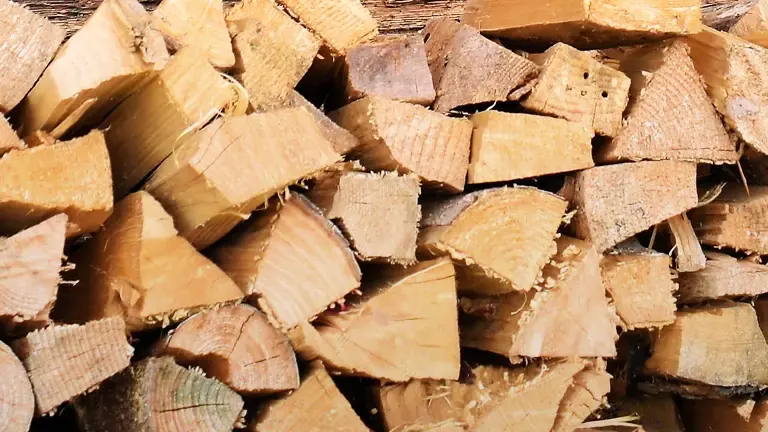
Oak’s adaptability makes it perfect for a variety of meats. It pairs exceptionally well with beef, bringing out the deep flavors of steaks and briskets. Oak also complements the distinct taste of lamb, where its subtle sweetness can soften the meat’s gamey flavor. For those experimenting with smoking blends, oak’s balanced nature makes it an excellent base; it can be mixed with milder woods like apple or cherry to introduce complexity, or with stronger woods like hickory or mesquite to amplify the smoke intensity. This makes oak a reliable and indispensable choice for both novice smokers and experienced pitmasters looking for a consistent and satisfying smoking experience.
7. Alder: The Seafood Specialist
Alder wood, steeped in the heritage of the Pacific Northwest, is celebrated for its harmonious relationship with seafood, particularly salmon. Its light smoking profile, characterized by a delicate touch and a hint of sweetness, ensures that it enhances rather than overwhelms the subtle flavors of the meat. This makes alder the ideal choice for seafood lovers and those who prefer their smoked dishes to retain a natural taste.
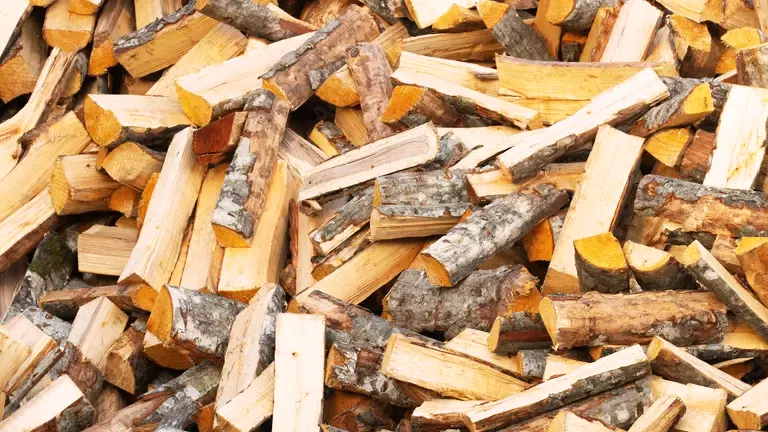
Alder is particularly famous for its pairing with salmon, a practice rooted deeply in the traditions of the Pacific Northwest’s indigenous communities. This method has been perfected over centuries, with alder smoke complementing the fatty richness of salmon, ensuring a result that is smoky yet subtly sweet. Aside from fish, alder also pairs wonderfully with lighter meats like poultry, where it adds a refined smokiness without masking the meat’s inherent flavors. For those looking to explore the gentle art of smoking, alder provides a perfect starting point, offering a unique blend of delicacy and nuanced taste.
8. Maple: The Gentle Caress
Maple wood, sourced from the serene forests adorned with golden leaves, brings a gentle caress to the art of smoking. Known for its mildness and subtle sweetness, maple is a smoking wood that enhances rather than overpowers, perfect for those seeking just a whisper of smoke in their dishes. Its sweetness, reminiscent of the beloved maple syrup, adds a nuanced depth to the smoked foods, enriching them without turning overly sugary.
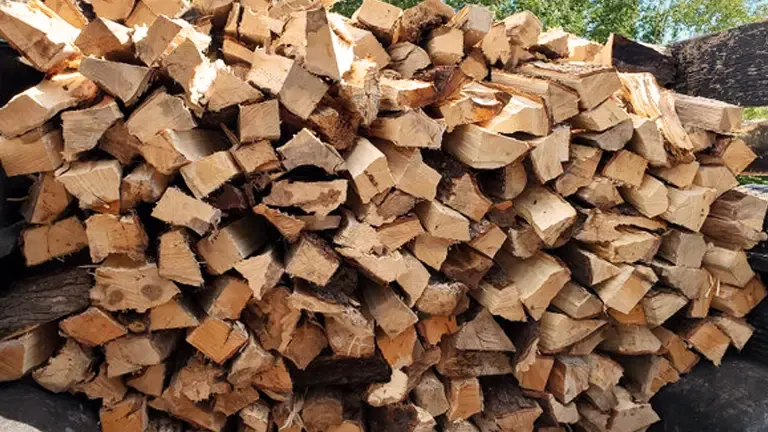
Maple is particularly suited for smoking pork, where it complements the savory richness of the meat, especially notable in dishes like smoked bacon, where its flavor really stands out. It also works beautifully with poultry, adding a mild smokiness that enhances without dominating, and with vegetables, where it introduces a light sweetness that elevates the natural flavors. For those wanting to experiment with maple’s smoking potential, trying it with breakfast items like bacon can turn a simple meal into a delightful experience. Maple’s ability to blend subtlety with flavor makes it a versatile choice for both meat and vegetable dishes, promising a touch of gourmet to everyday meals.
Things to Consider Choosing Wood For Smoking
Seasoned vs. Green Wood
- Understanding the Basics: Seasoned wood is dried over time and has less moisture, making it ideal for smoking as it burns hotter and cleaner. This type of wood produces a clear, aromatic smoke that enhances food flavors effectively. Green wood, still full of moisture, tends to smolder and can release soot and acrid flavors, negatively affecting the taste of your dishes.
Chips vs. Chunks
- The Case for Chips: Wood chips are small and thin, burning quickly and producing smoke rapidly, which is perfect for short smoking sessions or foods that cook quickly, such as fish or steaks.
- Championing Chunks: Wood chunks are larger, burn more slowly, and provide a consistent smoke ideal for long smoking sessions needed for meats like briskets or pork shoulders.
Sourcing
- Locality Matters: Sourcing wood locally ensures freshness and quality, as these woods are less likely to have been exposed to pests or contaminants during transport.
- Trustworthiness of Suppliers: Choosing reputable suppliers is crucial as some wood can be treated with chemicals for appearance or preservation, which can release harmful toxins when burned. Trusted suppliers guarantee that the wood is safe and chemical-free, ensuring the safety and flavor integrity of your smoked foods.
Conclusion
From the robust impact of mesquite to the subtle grace of alder, the variety of woods available for smoking offers a rich palette of flavors to explore. The key to mastering the art of smoke cooking is to experiment with different woods, blend them to discover unique flavor combinations, and ultimately find what best suits your culinary style. So fire up your smoker, try various woods, and mix and match to your heart’s content. Happy smoking, and enjoy your flavorful journey through the world of wood-smoked delicacies!
Looking for top-quality firewood? Explore our curated list Here!
FAQs
- Why do different woods produce different flavors when smoking meat?
Different woods have unique compounds, oils, and resins that influence their flavor profiles. As these compounds are released during the smoking process, they interact with the meat, infusing it with distinct aromas and tastes. - Can you mix different smoking woods together?
Absolutely! Many pitmasters blend woods to achieve nuanced flavors. For instance, a mix of hickory and applewood can offer a balance between strong smokiness and sweet undertones. - How does the region or terroir affect the flavor profile of smoking wood?
Just as grapes take on flavors from their growing region in wine-making, trees too can absorb distinct mineral and flavor profiles from the soil and environment. A maple tree from Vermont might have a slightly different profile than one from Oregon. - Is there a risk of using treated or painted wood for smoking?
Yes, there’s a significant risk. Treated or painted wood can release harmful chemicals when burned. Always ensure the wood you’re using is natural and untreated. - How do fruit woods, like apple or cherry, differ in flavor from nut woods, like pecan or hickory?
Fruit woods generally offer a milder, sweeter, and fruitier flavor, ideal for poultry or fish. Nut woods, on the other hand, are typically richer and more robust, making them suitable for red meats. - Why is salmon traditionally smoked with alder in the Pacific Northwest?
Alder is indigenous to the Pacific Northwest and has been used by native communities for centuries. Its mild flavor profile complements the fatty richness of salmon without overpowering it. - How does the age of the wood affect the smoking process?
Seasoned or aged wood, which is drier, burns hotter and cleaner, producing a better smoke for flavoring meats. Green or fresh wood can lead to cooler temperatures and produce more creosote, which can impart a bitter taste. - Are there any “exotic” woods that can be used for smoking, and how do they differ from more traditional choices?
Yes, woods like olive, grapevine, or even coconut shells are used in some cultures. These woods offer unique flavors, often influenced by the fruits or nuts they once bore. - Does the cut of meat determine the type of wood that should be used?
While there’s no strict rule, certain cuts with more fat or stronger flavors might pair better with robust woods, whereas delicate cuts often benefit from milder woods. - How can one ensure they’re sourcing sustainable and eco-friendly smoking woods?
Look for certifications or labels indicating sustainable practices. You can also source locally or buy from reputable suppliers committed to reforestation and sustainable harvesting.

David Murray
Forestry AuthorI'm David Murry, a forestry equipment specialist with a focus on chainsaw operation. With over 13 years of experience, I've honed my skills in operating and maintaining a wide range of machinery, from chainsaws to log splitters. My passion for the outdoors and commitment to sustainable forestry drive my work, which emphasizes safety, efficiency, and staying updated with industry advancements. Additionally, I'm dedicated to sharing my expertise and promoting environmental awareness within the forestry community.
6 comments
The smoke is carcinogenic. Red meat is carcinogenic. Smoked meats are carcinogenic. Dumb article. No one should be allowed to smoke meats in the suburbs due to air pollution concerns, just as all solid fuel burning should be banned. Firewood sellers should be financially responsible for the deaths and diseases the wood they sell causes.
Ralph Malph
September 25, 2023 6:35 amDeliberate smoke? You have got to be kidding it is full of carcinogens. “Every single disease that is non-communicable is impacted by air pollution. It is not only involved in worsening diseases but in causing them, and new diseases that would not otherwise occur are happening because of air pollution” – Sir Stephen Holgate, National Clean Air Conference Nov. 20/21
Clive Stott
September 23, 2023 7:26 amGet a life
Laird
September 28, 2023 12:50 amGet a life
Laird
September 28, 2023 12:50 amGet a life













It should be illegal... lmao. Shut your ac off. Turn off all of your electronics for good. Only ride a bicycle. Candles also use resources. In the winter you can just use piles of recycled paper. No vacations. I mean, one plane ride is worse than 200 life times of barbecuing. It's funny how the people who believe these things are destorying the planet live, in cesspools with zero nature half the time. Hunting and gathering is going to be a huge life change I'd imagine....If you're in the suburbs, well that alone is basically murder.
actualperson
February 21, 2024 7:26 am